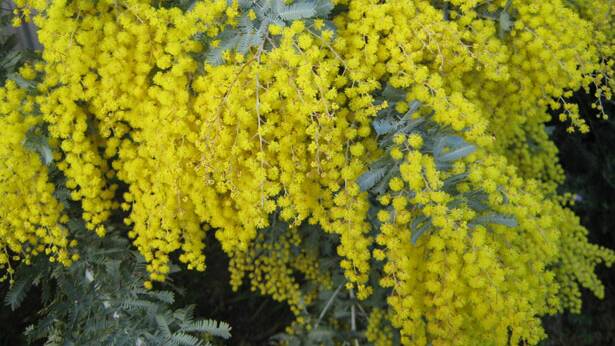
This Tuesday is Wattle Day, celebrating Australia's national floral emblem (the golden wattle, acacia pycnantha) and the start of spring. In our region, Queanbeyan will paint - or rather, light - the town yellow, and the Bungendore Wood Works Gallery will hold a special display of wattle wares.
Subscribe now for unlimited access.
$0/
(min cost $0)
or signup to continue reading
Our region, though, has a special connection to the plant. "Mount Jerrabomberra, outside Queanbeyan, is the home of golden wattle," Wattle Day Association president Suzette Searle said.
In 1917, the horticulturalist Charles Weston collected golden wattle from the site while looking for species to plant on Canberra's flat and dusty plain - while the capital city was newborn, and decades before the golden wattle became our national emblem in 1988. "It's a happy coincidence," Ms Searle said.
READ ALSO:
More than a century later, Mt Jerrabomberra is still covered in golden wattle. While some occurs naturally on the mountain, a Queanbeyan land care group planted a tiny avenue of wattles (about 60cm) near the Halloran Drive carpark three years ago. "It's only small, but this could become a tourist destination for people who want to see a lot of golden wattle," Ms Searle said.
In Queanbeyan itself, the trees in Monaro Street and the shared path / pedestrian pathway will be lit up yellow from Tuesday to Sunday - joining cities from Townsville to Hobart in illuminating their streets. This initiative is new this year, Ms Searle said, particularly because COVID has forced many towns to cancel their wattle festivities.
"Just as the wattle lights up our lives during the day," Ms Searle said, "city councils and national organisations will light up their buildings in yellow at night to wish everyone happy Wattle Day, and to lift our spirits at a time when the wattle, with its symbolism of resilience, has a lot to offer us."
The Bungendore Wood Works Gallery will promote Wattle Day as "an opportunity to focus on the beautiful wood of our more than a thousand species", Ms Searle said. There are hand-crafted furniture and gifts made out of wattle - many from blackwood (acacia melanoxylon) - and sprigs of fresh wattle in vases displayed throughout the gallery. This is the second time the gallery has worked with the Wattle Day Association.
In Canberra, Questacon, ANU's Shine Dome, and the Telstra Tower will also be lit up yellow. At Government House, primary school children will present a basket of wattle to Their Excellencies Governor the Hon. David and Linda Hurley. Mrs. Hurley has written a song, 'The Wattle Blooms', which she will sing with the children.
Wattle, Ms Searle believes, is having its moment in the sun as a symbol of Australia. Later this year, for instance, the Reserve Bank will issue a $100 note featuring the golden wattle.
Wattle Day itself has only officially been proclaimed on 1 September across Australia since 1992. Before then, it was celebrated at different times in different parts of the country to coincide with the peak flowering season, Ms Searle said. NSW, Victoria, and South Australia were the first states to celebrate the day on September 1, in 1910. "It was a patriotic way of appreciating all we have in this country," Ms Searle said.
The golden wattle may only have been our national emblem for three decades, but the plant has been a symbol of unity and resilience since the late 19th century.
In 1890, the Wattle Blossom League was formed to promote patriotic sentiment among Australian women, while wattle was sent to Australian soldiers fighting in World War I.
Wattle in all its varieties occurs throughout the country, Ms Searle pointed out, rather than in just one state; its ubiquity means that it can represent all Australians.
It is also a particularly hardy species, able to withstand extremes of fire and drought, poor soil and a dry climate. "They've evolved into over a thousand species that can cope and regenerate in difficult circumstances - and they have been used as a symbol of that resilience," Ms Searle said.
The seed can last in the soil for more than 60 years until the seed coat breaks down enough for water to get in and germinate, Ms Searle said. Wattle is also often the first plant to regenerate after a fire; as a nitrogen-fixing plant, it increases soil fertility, so other plants can regrow. "A very generous species!" Ms Searle said.
For more information, visit the Wattle Day Association: http://www.wattleday.asn.au/


